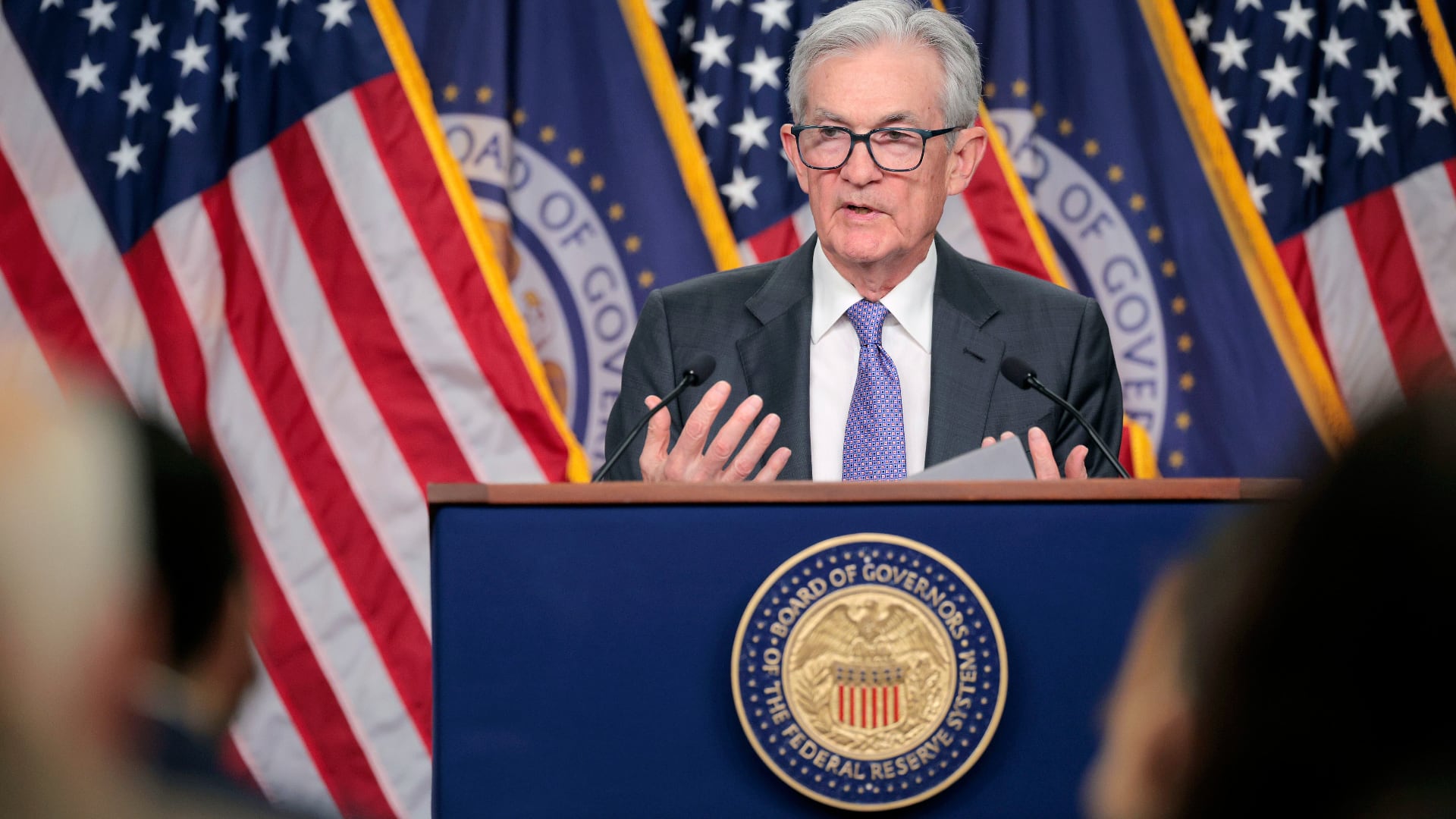Trey Roberts can still remember the moment he decided he wanted to go to college.
Growing up in Halifax County, North Carolina, higher education was always an aspiration. Roberts' parents stressed the importance of education as a way to make a better life for himself. He started at a community college in a neighboring county but stopped due to the cost.
As he washed dishes at his movie theater job, the J. Cole song Love Yourz came on his playlist. He said it helped him harness the energy he had to go back to school in earnest.
"I don't know what it was about that song," Roberts told Cheddar News. "There's that line 'No such thing as a life that's better than yours.' Listening there, it made me want to take control of my destiny. There's nothing wrong with the path the people where I'm from live. I think they're doing fine and living happy lives. I just wanted to do a little more."

Roberts, 30, went back to community college and on to William Peace University, where he graduated with a communications degree in 2018. Now a regional organizer for the New North Carolina Project, Roberts said he is grateful he could go to college, but he still has nearly $40,000 in debt weighing him down and preventing him from creating a good economic future for himself.
Roberts' experience accumulating thousands of dollars in debt is closer to the rule than the exception among the more than 43 million Americans who hold a combined $1.6 trillion in federal student loan debt. And after nearly two years of a pandemic pause on federal loan payments and interest, those millions are less than 90 days away from the return of payments. The change threatens to upend economic life for many and leaves borrowers wondering if they will see any relief from the Biden administration.
"The debt honestly prevents me from paying any of that kind of thinking," he said. "I don't even think about the idea of buying a house because of it. I won't really consider it until that's gone, and I don't imagine it leaving anytime soon."
The past two years have been a boon for borrowers. At the onset of the COVID-19 pandemic in March 2020, the CARES Act instituted a moratorium on federal student loan payments and the accumulation of interest on those loans.
The original moratorium lasted through September 2020, which President Donald Trump extended through the end of December, and again through Jan. 31, 2021.
President Joe Biden came into office and extended the payment pause through Sept. 30, 2021, then again through January, and for a final time, after much public pressure earlier this year, with the moratorium now set to end on the first of May.
'Cancel Student Debt'
In addition to the looming resumption of payments, the debate over canceling federal student debt hangs over borrowers and the White House.
Progressives captured energy on the issue during the 2020 Democratic primary. Candidates like Sens. Bernie Sanders (I-Vt.) and Elizabeth Warren (D-Mass.) proposed plans to forgive all or a large chunk of federal student loan debt. Of the estimated total $1.75 trillion in student debt, over 90 percent sits in the federal government's student loan portfolio.
Warren has since rallied more support around canceling up to $50,000 of debt, even recruiting Senate Majority Leader Chuck Schumer to the cause.
The Biden administration has so far slow-walked any major announcements about canceling student debt, despite the president saying during the primary that he would support forgiving up to $10,000 of federal student debt.
Supporters of cancellation argue the president's powers under the Higher Education Act of 1965 allow him to forgive student debt without an act of Congress. They say he's already used this authority to pause federal loan payments and the accumulation of interest.
"[T]he President can do it with a flick of the pen," Schumer said at a recent town hall hosted by several groups promoting student debt forgiveness. "All he has to do is sign an executive order. He doesn't need a single senator. He doesn't need a single Congress member on his side. He just has to do it."
The Departments of Justice and Education last year reviewed whether the president has the legal authority via executive order. The results of that review are contained in a heavily redacted memo released by the Debt Collective in October after a Freedom of Information Act request.
White House Press Secretary Jen Psaki last month did not provide a timeline for when the memo’s contents would be made public and said the president continues to review his options.
Despite the review, Biden has already canceled $15 billion of federal student debt for certain borrowers without any congressional input. The cancellation applies to borrowers with total and permanent disabilities, some borrowers who applied for the Public Service Loan Forgiveness program, students defrauded by the ITT Technical Institute, and students who did not complete degrees at institutions that have since shut down.
"We're talking about the president using an authority that he's already put into practice," said Cody Hounanian, executive director of the Student Debt Crisis Center in an interview. "We all know that a piece of legislation would face significant roadblocks because Congress is just gridlocked."
The White House has taken Biden's support for forgiving $10,000 and put the onus on Congress to act.
"I would say if Congress sends us — him a bill to cancel $10,000 in student debt, he'd be happy to sign that into law," Psaki said at a recent press briefing.
Who Holds Student Debt?
Some advocates point to the inaction as a sign that the president does not see loan forgiveness as a priority. Biden suggested that it didn't make sense to use money to forgive the debt "for people who have gone to Harvard and Yale and Penn."
According to an estimate from higher education expert Mark Kantrowitz, only 0.3 percent of federal student borrowers attended an Ivy League school. Advocates say Biden's position shows a lack of understanding of who actually holds student debt.
"The president and others would like people to think that this is an issue only affecting people who graduated from elite schools like Yale who are well off, and that's just not the case," Hounanian said.
Kantrowitz estimates that 49 percent of federal student borrowers attended a public college or university. Steven Perkins, 26, is among them, having attended Miami University in Ohio.
Cost was a constant stressor during Perkins' college experience. In 2014, the Department of Education found Miami to be the most expensive public university in the country.
Perkins said just as frustrating as the debt itself was the effect it had on his ability to get transcripts to send to potential employers. His inability to pay put him in a frustrating circle where his loan servicer would tell him to talk to the university, and the university would send him right back to the loan servicer for answers about payment and transcripts. He said he felt both institutions were giving him "a runaround."
"It's this circle where I don't have money so I can't pay the loan," Perkins said. "And since I can't pay the loan, I can't get my transcript to send to the employer that would pay me money so I could pay the loan. What are you supposed to do?"
Students in graduate or professional programs at both public and private schools hold a significant amount of debt as well. A report from the Education Data Initiative found the average graduate student debt balance is $91,148 for federal borrowers.
Nina Franco, 23, knows the experience well as a law student at Pennsylvania State University.
After her parents helped her pay for her bachelor's degree, Franco is now on her own paying for law school with a scholarship, grants, and federal loans. She said she did not think about her loans very much while in undergrad, but that has changed now that she is paying for school by herself.
"Now that I'm in law school and keeping up with the news on student loans, it definitely weighs on me more," she said. "I'm constantly playing with monthly breakdowns and trying to guess what my salary might be so that I can not pay for 20 years."
She said her growing balance obscures any future plans she might have, including major purchases like buying a home.

"I try to convince myself that it is possible," she said. "I try to convince myself that student loans will become manageable like a phone bill, but I still worry about how it'll impact something like future savings. That money could be going toward something big like a house or a car or an emergency fund."
Other borrowers take on debt and do not end up finishing their degrees due to circumstances outside of their control. Larry Hennis, a 65-year-old press operator from Saint Peter, Minn., is a textbook example.
Hennis, who recounted his story in the Washington Post last year, was accepted into William Mitchell College of Law in 2004 with the goal of pivoting away from the English master's program he was enrolled in and toward a new career in legal writing.
The same year, his wife was diagnosed with vaginal cancer, an incredibly rare form of cancer and one that requires intense and expensive treatment. Hennis became his wife's primary caregiver, but the two decided he should enroll in law school so as to not let her diagnosis deter his education.
"There are good days and bad days caring for someone who's chronically ill," Hennis told Cheddar News in an interview. "We'd have stretches where she's doing well, but it would take just one setback to change everything. This was my life for eight years."
Ultimately, keeping up with law school and caring for his wife became too much. Hennis left school with $60,000 still owed.
He filed for bankruptcy in 2009 due to the medical bills and put his loans into deferment and forbearance, where they accumulated interest over years. Hennis' wife died in 2012, and shortly thereafter his loans went into default.
The government has garnished 15 percent of Hennis' wages to pay for the loans after entering default. Hennis said he's paid about $55,000 toward his loans, but after interest, penalties, and fees his debt has ballooned to over $114,000, nearly double what he originally owed.

"It's a meaningless number," Hennis said. "I feel like I'm being penalized because my wife got cancer."
Hennis said he has been working with a lawyer specializing in student debt to consolidate his loan to get out of default and resume a manageable monthly payment. He praised his lawyer but lamented that he could not get any assistance from his student loan servicer when he needed help.
"I'm here because of extraordinary circumstances, and there's no one in the system that will contact you or work with you," Hennis said. "They don't help you."
Potential Impact of Canceling Debt
Advocates say it's borrowers like Perkins, Franco, and Hennis that broad student debt cancellation would help the most.
"This hand-wringing about whether he has the authority to cancel some amount of student debt for everybody, it really is just an exercise in theater," Mike Pierce, executive director of the Student Borrower Protection Center, said on Cheddar News. "This is just a question of political will. If the Biden administration wants to keep the president's campaign promise and cancel that for everybody, he could do it tomorrow."
In April 2021, Sen. Warren released data illustrating what the impact of broad debt forgiveness might look like.
According to the data from the Federal Student Aid office, if the federal government canceled $50,000, 36 million or about 80 percent of federal borrowers would have their debt completely eliminated, including 95 percent of the 10 million federal student loan borrowers who were either in default or more than three months delinquent on their debt at the end of 2019.
The impact would be smaller if Biden's proposed $10,000 were canceled. With that amount, 15 million borrowers would have their debt completely eliminated, of which only 4.6 million would be the borrowers who were either in default or more than three months delinquent at the end of 2019.
Despite the energy around the issue, implementing broad federal student debt cancellation is complicated and bound to draw political backlash. Millions of borrowers already spent years paying off their debt, and millions more Americans have not attended any kind of higher education institution.
Advocates say such complexity should not deter the Biden administration from taking action.
"I know there is an instinctual response to debt cancellation that 'This is not fair,'" Hounanian said. "When we're talking about fixing debt, we're talking about fixing a broken program. It's not a handout. It's about repairing what's been broken."
In the meantime, less than three months remain until payments resume. Borrowers have little to do but wait and reflect on their experience.
Trey Roberts said he did not regret going back to school, but clarified that he wished he and his family had more resources to learn about the financial burden of taking on student debt.
"If I could talk to my younger self, I would say talk to someone who's more educated on interest rates than someone like you or your family," he said.
Nina Franco offered no caveats in saying she had no regrets about her experience in higher education.
"My parents have always put an emphasis on education and the experience of going to college," she said. "Putting an emphasis on finance instead would have changed the course of my life. I wouldn't change anything."



